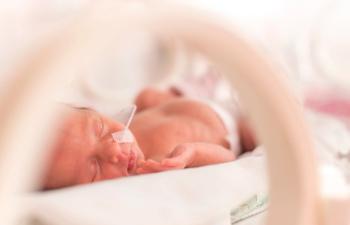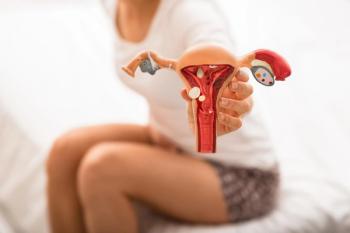
2nd Generation Endometrial Ablation
OBGYN.net Conference CoverageFrom American Association of Gynecological LaparoscopistsSan Francisco, California - November 2001
Hugo Verhoeven, MD: "Good morning, my name is Hugo Verhoeven and I'm from the Center for Reproductive Medicine in Dusseldorf, Germany. I am on the Editorial Board for OBGYN.net, and I'm reporting from the 30th meeting of the AAGL in San Francisco, California. I'm sitting with Professor Steve Corson. Steve, we've known each other for twenty years."
Prof. Stephen Corson, MD: "Time and memorial."
Hugo Verhoeven, MD: "It's a real pleasure that you have the time to talk to me on the topic of the 2nd generation of endometrium ablation. You are one of the founders of the AAGL; I think you're also past president. You've had all positions imaginable and you're also a Professor at what university?"
Prof. Stephen Corson, MD: "Thomas Jefferson University in Philadelphia."
Hugo Verhoeven, MD: "One of the main indications for hysterectomy in the past was irregular bleeding or heavy bleeding. A lot has changed, since about ten to twenty years we have the possibility to treat patients with heavy bleeding instead of with a hysterectomy we are talking about the techniques of endometrium ablation. I think the first techniques were laser surgery and later on the rollerball and endometrial resection. Just give us a small overview about the advantages but especially the disadvantages of those older techniques."
Prof. Stephen Corson, MD: "The neodymium YAG laser was the first technique and it was used either with a bare fiber as a digging technique or a surface technique. It was developed by Milton Goldrath, and in Milt's hands it gave excellent results. The problems were that, and I speak from experience in having done it, it's tedious and you can get into some trouble with fluid intravasation even though you're using physiologic solutions. The next step was to put it into the resectoscope either as a resection with a loop or a rollerball roller barrel approach, very skill intensive. The uterus is not a planar organ, the walls are curved, and if you don't make good contact you don't get a good result. Until recently, we were restricted to using non-electrolyte containing solutions because there was a problem, if you got fluid intravasation not only did you have hypervolemia but you had hyponatremia so you could get into serious problems. Again, the instrumentation is very difficult and a lot of gynecologists said they're just not interested in doing this. So one of the holy grails was to find a method of endometrial ablation that was safe, simple, easy to learn, easy to do, effective, and which could be done in the office preferably with paracervical block. The first device was the Thermachoice® balloon which one puts into the uterus and inflates the balloon so that it makes contact with the wall and passes a hot saline solution so there is a pass of transfer of heat. The problem with this is that if you don't make good contact - the contact issue again - with the wall you won't get a tissue effect if the uterus is a little bit asymmetric, it's septate, or it has a little bicornate configuration again."
Hugo Verhoeven, MD: "Or it has myomas."
Prof. Stephen Corson, MD: "Or myomas or the tubal recesses are very long and thin, again, you don't have contact but it's simple and easy to do. The real disadvantage, I feel, is that it's a blind technique. You dilate the cervix and put the balloon in, and you can perforate the uterus and you know we all perforate the uterus without knowing it. More subtle is creating a false passage so you wind up putting the balloon into a cavity, which is not the uterine cavity. We've all been there as well. If you're just below the serosa and you've done a false passage you may burn tissue in the cul-de-sac. If you're anterior you're going to burn the bladder so I think what would be better is a technique which would allow you to see what you're doing. The HTA - the Hydro ThermAblator® - interestingly is Milton Goldrath's idea also. The technology twenty years ago didn't exist to make it a safe procedure but now it does, and the heart of the procedure is a gravity fed system with recirculating saline at low pressure so that the intrauterine pressure is 50 mm of mercury. The tubes don't open until something in excess of 70 mm of mercury pressure so what happens is you put your hysteroscope in, see where you are, make sure everything is okay, and turn on the heater. The fluid is re-circulated at 300 ml per minute at 90 degrees and the fluid flows into all the crevices and the interstices disease of the uterus so that you don't have to make contact with something and the amenorrhea rate is very favorable. All the operator has to do is sit still for ten minutes and talk to the patient and the procedure is done."
Hugo Verhoeven, MD: "Are you doing that under local anesthesia?"
Prof. Stephen Corson, MD: "We do it in the office with either a paracervical block only or a paracervical block with some intravenous sedation."
Hugo Verhoeven, MD: "But it's amazing that burning the endometrium doesn't hurt."
Prof. Stephen Corson, MD: "You know as well as I that the uterus is temperature insensitive. It is very sensitive to stretch receptors so that if you put something in and increase the pressure that will hurt or conversely if you put a suction cannula into the uterus you know that hurts also. Or if you move the myometrial wall but it is insensitive to temperature."
Hugo Verhoeven, MD: "What are the contraindications for this technique?"
Prof. Stephen Corson, MD: "The first contraindication is you have to make sure the patient doesn't have cancer so you need to have looked at and sampled the endometrium. You and I, I suspect, would prefer to do that hysteroscopically, other people might be satisfied with an ultrasound or a sono-ultrasound with some sort of endometrial sampling. The Pap smear should be normal, and there should be no active vaginal or cervical infection. The same as you wouldn't put anything into the uterus under those circumstances. We're doing cavities up to 10 ½ cm, that's the FDA registration study but we've all done it in Phase II patients with 12 cm cavities, it seems to work just as well."
Hugo Verhoeven, MD: "As you are burning the endometrium, I guess, the endometrium should be thin as possible so are you doing the treatment under contraception, GnRH analog, or immediately after the end of the period?"
Prof. Stephen Corson, MD: "The methods of endometrial ablation all seem to work better with some sort of endometrial preparation. We're using a single shot of a GnRH analog; we're using Lupron and 3.75 is enough. In Europe, I guess they would use goserelin or a similar agent. We're doing the procedure three to four weeks after the injection and by then you have a very thin and relatively avascular endometrium."
Hugo Verhoeven, MD: "What about your experience with the technique, how many cases did you do? What is your experience with it and what were the complications?"
Prof. Stephen Corson, MD: "I would refer you to the FDA trial data from the centers which participated and the complications were very few and far between. As a matter of fact, in the control arm there were more complications with rollerball than there were with this technique. The amenorrhea rate was statistically the same, and the success rate as judged by post-operative bleeding was statistically the same. We now have interestingly two-year data and the amenorrhea rate is now up to 48% at two years, having been 40% at one year so I think that's more objective than satisfaction studies. For me, if you ask a subject are you satisfied, the subject wants to say yes, particularly if she likes the physician or she likes the person interviewing her. Amenorrhea meaning no bleeding is a more objective endpoint and I use that as my personal yardstick."
Hugo Verhoeven, MD: "But do you really always achieve a complete amenorrhea?"
Prof. Stephen Corson, MD: "No, because it's very difficult to completely destroy the endometrium short of taking out the uterus. When you get close to 50% amenorrhea and you get maybe some spotting in another 30% or 40%, you're now up to the 90 some percentile of either no bleeding or maybe a shield or a panty liner for a day or two, that's very acceptable."
Hugo Verhoeven, MD: "One of the disadvantages in my experience of the rollerball and the resectoscope was that sometimes you couldn't remove the endometrium completely and that you had development of a hematometra. That is probably not possible with this technique."
Prof. Stephen Corson, MD: "To get a hematometra you've got to have two things, you got to have some functional endometrium left and you have to have cervical stenosis which you've induced with the operation. So with any of the methods including this if you bring your field of action down too far and you're into the cervix causing cervical stenosis that's a risk. With any of the techniques you can get hematometra. The usual expectation is in the area of maybe 1% and 2% at the most. In our FDA registration study, if my memory serves me correctly, we had 1% with the HTA and 2% with the rollerball so it was more with the rollerball."
Hugo Verhoeven, MD: "With the rollerball you also have a complete occlusion or practically a complete occlusion of the uterine cavity, that's not the case with your new technique."
Prof. Stephen Corson, MD: "I think what you usually see is a shrunken cylindrical white cavity, you don't have the criss-cross adhesions and total obliteration as you would with a naturally occurring Asherman syndrome. That's not what happens after ablation in most cases."
Hugo Verhoeven, MD: "My final question is an observation - this technique is easy, hysteroscopy is easy, why are still not that many people in Europe and I heard also in the United States switching completely to endoscopy or hysteroscopy? Is this a lack of information, why is that?"
Prof. Stephen Corson, MD: "I think there are some people who are not well trained in hysteroscopy."
Hugo Verhoeven, MD: "Why don't they train?"
Prof. Stephen Corson, MD: "They've been doing it the way they've been doing it for so long - it's intellectual inertia and they won't change."
Hugo Verhoeven, MD: "We need to convince them."
Prof. Stephen Corson, MD: "You are an accomplished laparoscopist and an accomplished hysteroscopist so let me switch and ask you - was it easier for you to learn hysteroscopy or laparoscopy?"
Hugo Verhoeven, MD: "Hysteroscopy for me was the easiest."
Prof. Stephen Corson, MD: "For many people laparoscopy is easier; some people never get comfortable with a hysteroscope. What we're finding though is today, at least in the United States, the younger people who are coming out of residency training are by necessity trained in hysteroscopy, it's part of the residency programs now. They will be the people who will carry this procedure forward."
Hugo Verhoeven, MD: "My final question, any dreams or plans for the future, and what do you expect in the field of endometrium ablation as an even bettering of the technique?"
Prof. Stephen Corson, MD: "On the horizon has been the concept for years of getting an agent that one could give systemically as a pill or an injection where the agent would be concentrated in the endometrium as a light sensitizing agent, and one could then do true phototherapy to the endometrium and destroy it in that fashion. This has been on the horizon for perhaps twenty or thirty years but not something that has come to fruition. I think that would be a more specific way of delivering energy to the tissue that we want to effect but it hasn't happened yet, it may happen in the future."
Hugo Verhoeven, MD: "What about just a drug that a patient takes and it completely destroys the endometrium."
Prof. Stephen Corson, MD: "Right now it sounds like science fiction to me but who knows, if you can imagine it, it may be possible."
Hugo Verhoeven, MD: "Maybe we'll talk about that in Berlin next year."
Prof. Stephen Corson, MD: "Thank you."
Hugo Verhoeven, MD: "Steve, thank you very much for this interview."
Newsletter
Get the latest clinical updates, case studies, and expert commentary in obstetric and gynecologic care. Sign up now to stay informed.










